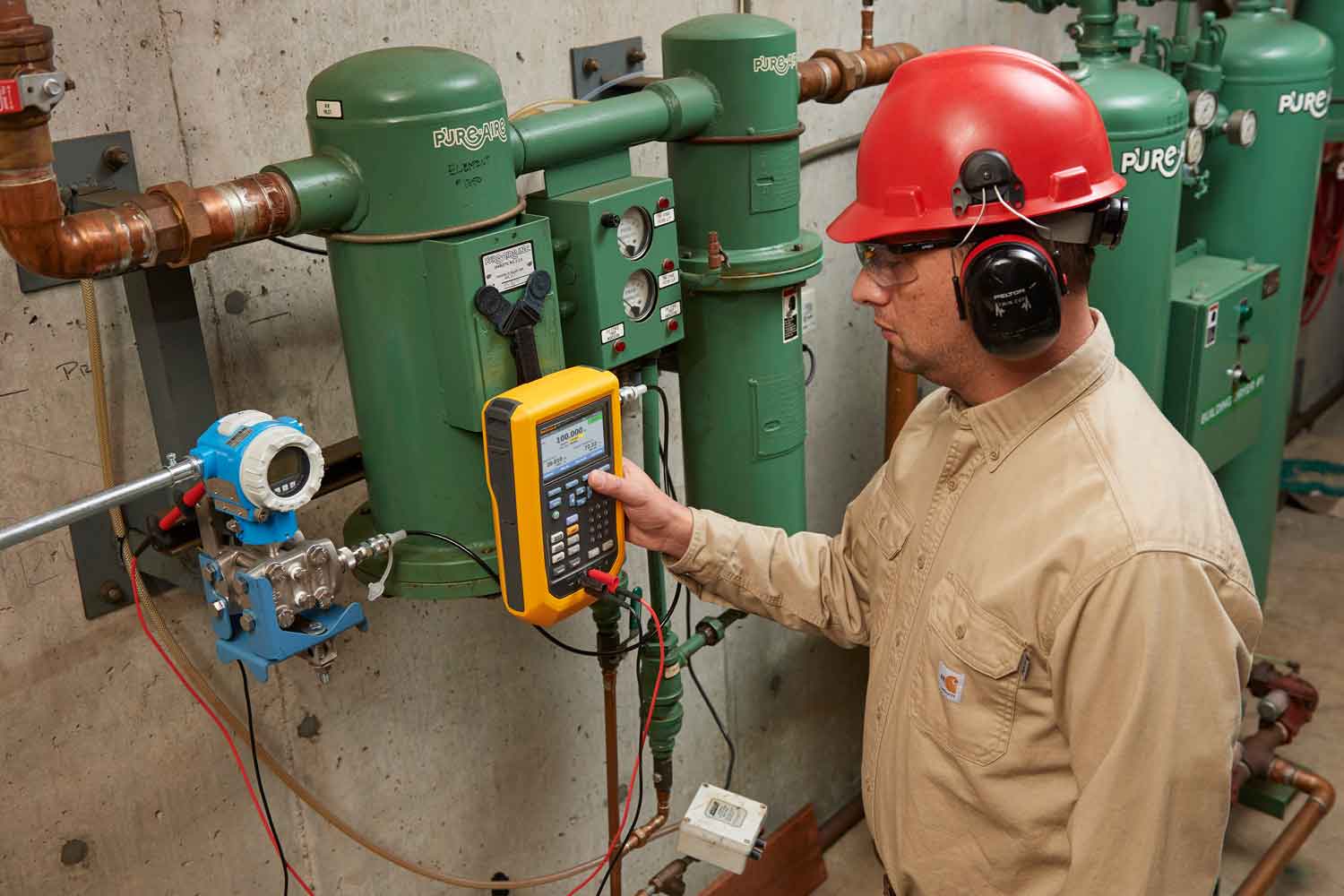Many people think of pressure simply as force distributed evenly over a defined area. Yet, there are different types of pressure and also different modes or manners of measuring pressure — all of which are differential in nature, i.e., they’re defined by the difference between a starting point of measurement and an end point.

Two of the most common modes of pressure measurement, gauge and absolute, provide different readings and have different uses.
In this article, we’ll cover the difference between gauge and absolute pressure and when to utilize each for the most accurate measurement for your use case.
What Is Gauge Pressure?
Gauge pressure is a mode of measuring pressure in relation to atmospheric pressure. In other words, gauge pressure uses Earth’s natural atmospheric pressure, also called barometric pressure, as its starting point or reference. Atmospheric pressure varies depending on factors like weather patterns and a location’s elevation relative to sea level. (Higher elevations experience lower atmospheric pressure, while lower elevations experience higher pressure.)
Therefore, changes in atmospheric pressure directly affect gauge pressure. This means gauge pressure measurements will vary depending on the distance above sea level and the barometric fluctuations due to weather. For instance, say you start driving down a mountain with a bottled water. As you drive down the mountain, you’ll notice that the bottle has compressed. This is because the pressure at the bottom of the mountain is higher than it is at the top — the atmospheric pressure has changed, so the starting point or zero point for any gauge pressure measurement has changed, too.
There are many different uses for gauge pressure, so its measurement units will depend on application. That said, some popular units of measurement are pounds per square inch gauge (PSIG) and Pascals (Pa). PSIG is common in the United States while the Pascal is the International System of Units (SI) standard for pressure. (Note that there is a difference between PSIG and PSIA.) One Pascal is equal to one Newton (N) per square meter and one PSIG is equal to 6,894.757 Pa.
What Is Absolute Pressure?
Absolute pressure is the pressure relative to the starting point of, in theory, an absolute vacuum, i.e., nothing. However, an absolute vacuum isn’t possible (even in outer space). Therefore, in practice, the starting point for measuring absolute pressure is a hard vacuum that is very low. Because its starting point is, essentially, zero, absolute pressure is the total pressure in a system, including the atmospheric or gauge pressure. In other words, absolute pressure is the sum of atmospheric pressure and a gauge pressure measurement.
Differences Between Gauge and Absolute Pressure
The key difference between gauge and absolute pressure comes down to their respective reference points: Gauge pressure’s starting point is whatever the atmospheric pressure is at the time and location of the measurement while absolute pressure’s zero point is a hard vacuum. Although the value of gauge pressure (the difference between atmospheric pressure and the measured pressure) will not change with changing atmospheric pressure, where it lies on the absolute scale will change. An absolute pressure reading will be the same no matter when or where it’s takenbecause the vacuum reference never changes.
There are some other important differences between the two modes. These include:
- Applications: Some use cases might call for just gauge or just absolute pressure. For example, gauge pressure is best suited for measuring pneumatic and hydraulic systems, while absolute pressure is better for vacuum systems and thermodynamics.
- Measurement equipment: Instruments such as manometers and diaphragm pressure gauges take gauge pressure measurements. Meanwhile, barometers, absolute pressure transducers, and vacuum gauges.
When To Use Gauge or Absolute Pressure Measurement
Like we’ve mentioned earlier, gauge and absolute pressure have separate uses due to their differences. Gauge pressure is best for situations where there isn’t a need for high degrees of precision. An example of systems that could you could effectively use gauge pressure to monitor include the air pressure in a car’s tires or the cleanliness of your home air filtration system. (If the difference between the atmospheric pressure on one side of the filter is too high compared to the pressure on the other side, it’s time to change the filter.)
Absolute pressure measurement, on the other hand tends to be a better choice for situations that require a high degree of precision. For instance, absolute pressure is important when trying to understand the weather, predicting tsunamis, and in many manufacturing process such as making semiconductors.
Pressure Measurement and Calibration Go Hand in Hand
No matter what type of pressure measurement you use, it’s always important to make your pressure measurement instruments are properly calibrated. No matter what pressure measurement mode you need to use, faulty equipment can give you an inaccurate reading and lead to possible complications like systems and machines breaking down or even explosions in environments that involve high-pressure systems. Routinely calibrating all of your pressure gauges and sensors helps guarantee you get the right measurements every time.
Want to learn more about the role that calibration plays in pressure measurement? Please check out the below resources.